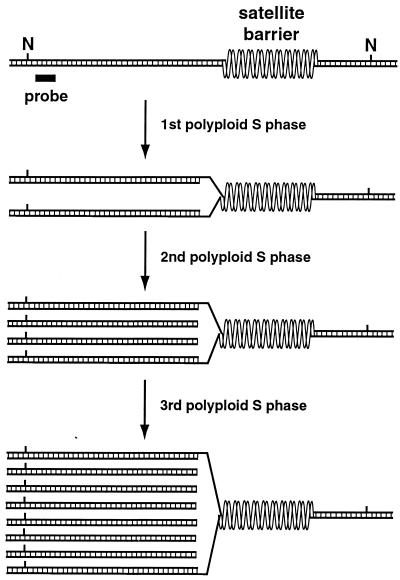FIG. 6.
Model for heterochromatic underreplication and the structure of polytene chromosomes. Double-stranded DNA in a hypothetical region of Drosophila pericentromeric heterochromatin is shown, with NotI restriction sites (N) and a region of probe homology indicated. Satellite repeats inhibit their own replication by blocking fork elongation. The barrier formed by satellite repeats could reflect an intrinsic property of highly repetitious sequences or could result from the compaction of satellite repeats into a chromatin structure distinct from other heterochromatic sequences. The first polytene S phase ends before replication forks stalled at satellite barriers are resolved, causing heterochromatic underreplication. Truncated linear DNAs are generated in the second polytene S phase, when replication forks extend to the same barriers where forks were left unresolved in the first polytene S phase. DNAs are shown with blunt ends for clarity, but they would probably have staggered ends, particularly on lagging strands. Once produced, truncated DNAs would be replicated in each subsequent S phase.

